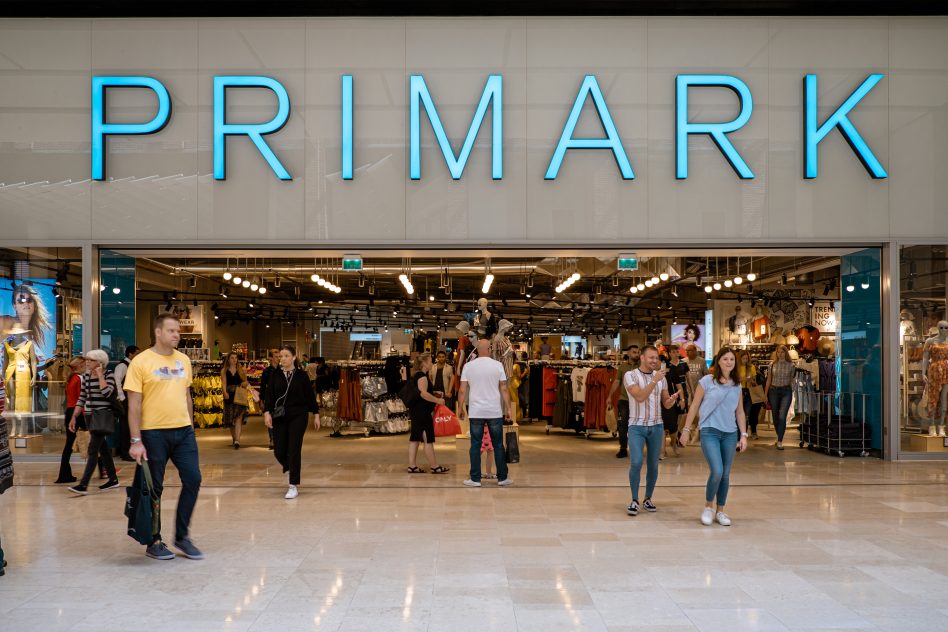
Image credit: fokke baarssen / Shutterstock.com
The rise of E-commerce sales has more than doubled in the last 10 years. With that said, retail giant Primark made 9.5 billion dollars in sales revenue last year without a penny of it coming from online shopping.
Primark’s decision to focus primarily on physical retail stores comes at a time of economic uncertainty, with stores like Forever21, JCPenney, and many more, closing stores and filing for bankruptcy.
Primark now plans to expand to 60 retail stores in the U.S. over the next 5 years, while retail research reports have estimated that another 80,000 retail outlets will be closing their doors within the same timeframe.
So, how is Primark continuing to expand without online shopping?
The current thinking from the majority of retail providers is that you have to have an online presence. But online shopping services are actually incredibly expensive for retailers to maintain, including a logistical hub to dispatch the goods from and local distribution centers to deliver the goods to the customer.
These extra steps eat away profit margins, which in retail are fairly slim anyway. The real profit killer though is when customers purchase a product online and then return it afterward, which is more likely to happen than if the customer buys an item physically in-store.
Returns are by far the biggest profit losses for online retailers. The cost for processing a return item worth $100 for example, will cost the company an average of $26.50.
Primark knew from the very beginning the difficulty of trying to make a profit from E-commerce and decided they weren’t even going to try, instead focusing all resources on physical stores. This wasn’t an issue for the company until the Covid-19 lockdowns went into effect and forced the retail chain to close all stores.
Online shopping became the sole lifeline for retail outlets during the pandemic. Despite stores being closed, sales could still be made online. However, Primark didn’t give in to the pressures caused by the pandemic or the outcries from customers to offer online shopping during this period, even after revenue dropped by an estimated 2 billion pounds.
Thankfully for Primark, the lockdown closures didn’t drag out for long enough to really make them rethink the business model. In 2022, instead of traditional E-commerce shopping, Primark launched a trial service called ‘click & collect’ in certain UK stores.
This allowed shoppers to purchase products online and pick them up in-store. Although there are some costs to maintain the website, it is a lot cheaper than the logistics and distribution costs normally associated with online shopping.
This also provided another benefit for Primark. As the customer was allowed inside the store to pick up their purchases, they were also more likely to buy more items whilst they were there. This has been called ‘consumer momentum’ by psychologists, as it is easier to justify further spending after initial purchases have already been made.
As one of the largest retailers across the UK and Europe, Primark relies on making a profit from selling large quantities of items from its vast selection of products and large retail spaces.
The main reason why Primark made 9.5 billion in revenue last year despite not having an online store, comes from the fact that it sells thousands of products at low-profit margins and sources a lot of its clothing cheaply from China. Both these facts allow Primark to sell its merchandise at lower prices than the majority of its competition.
In recent years, Primark’s only real rivals in terms of the number of products available and low-price range are from digital-only outlets such as the Chinese distributor Shein. In many cases, they offer even lower prices than Primark. Despite this, around 80% of shopping still happens in-store, according to the research of the National Retail Federation.
Even with this advantage, Primark got off to a slow start when expanding into the United States. In 2015, Primark launched its first store in Boston. Over the next 4 years, it only opened 9 more stores in North America.
To succeed in the US and overcome the increased competition present in the States, Primark was forced to scale back the size of its stores. After much experimentation, Primark settled on storefronts of around 35,000 square feet as the sweet spot.
Since then, online shopping has continued to decline and Primark’s core strategy of focusing on physical retail has really paid off. With almost 10 billion dollars grossed last year and expansion in America continuing, the future is looking bright for the retailer despite many in the market being forced to close down.

Image credit: fokke baarssen / Shutterstock.com
The rise of E-commerce sales has more than doubled in the last 10 years. With that said, retail giant Primark made 9.5 billion dollars in sales revenue last year without a penny of it coming from online shopping.
Primark’s decision to focus primarily on physical retail stores comes at a time of economic uncertainty, with stores like Forever21, JCPenney, and many more, closing stores and filing for bankruptcy.
Primark now plans to expand to 60 retail stores in the U.S. over the next 5 years, while retail research reports have estimated that another 80,000 retail outlets will be closing their doors within the same timeframe.
So, how is Primark continuing to expand without online shopping?
The current thinking from the majority of retail providers is that you have to have an online presence. But online shopping services are actually incredibly expensive for retailers to maintain, including a logistical hub to dispatch the goods from and local distribution centers to deliver the goods to the customer.
These extra steps eat away profit margins, which in retail are fairly slim anyway. The real profit killer though is when customers purchase a product online and then return it afterward, which is more likely to happen than if the customer buys an item physically in-store.
Returns are by far the biggest profit losses for online retailers. The cost for processing a return item worth $100 for example, will cost the company an average of $26.50.
Primark knew from the very beginning the difficulty of trying to make a profit from E-commerce and decided they weren’t even going to try, instead focusing all resources on physical stores. This wasn’t an issue for the company until the Covid-19 lockdowns went into effect and forced the retail chain to close all stores.
Online shopping became the sole lifeline for retail outlets during the pandemic. Despite stores being closed, sales could still be made online. However, Primark didn’t give in to the pressures caused by the pandemic or the outcries from customers to offer online shopping during this period, even after revenue dropped by an estimated 2 billion pounds.
Thankfully for Primark, the lockdown closures didn’t drag out for long enough to really make them rethink the business model. In 2022, instead of traditional E-commerce shopping, Primark launched a trial service called ‘click & collect’ in certain UK stores.
This allowed shoppers to purchase products online and pick them up in-store. Although there are some costs to maintain the website, it is a lot cheaper than the logistics and distribution costs normally associated with online shopping.
This also provided another benefit for Primark. As the customer was allowed inside the store to pick up their purchases, they were also more likely to buy more items whilst they were there. This has been called ‘consumer momentum’ by psychologists, as it is easier to justify further spending after initial purchases have already been made.
As one of the largest retailers across the UK and Europe, Primark relies on making a profit from selling large quantities of items from its vast selection of products and large retail spaces.
The main reason why Primark made 9.5 billion in revenue last year despite not having an online store, comes from the fact that it sells thousands of products at low-profit margins and sources a lot of its clothing cheaply from China. Both these facts allow Primark to sell its merchandise at lower prices than the majority of its competition.
In recent years, Primark’s only real rivals in terms of the number of products available and low-price range are from digital-only outlets such as the Chinese distributor Shein. In many cases, they offer even lower prices than Primark. Despite this, around 80% of shopping still happens in-store, according to the research of the National Retail Federation.
Even with this advantage, Primark got off to a slow start when expanding into the United States. In 2015, Primark launched its first store in Boston. Over the next 4 years, it only opened 9 more stores in North America.
To succeed in the US and overcome the increased competition present in the States, Primark was forced to scale back the size of its stores. After much experimentation, Primark settled on storefronts of around 35,000 square feet as the sweet spot.
Since then, online shopping has continued to decline and Primark’s core strategy of focusing on physical retail has really paid off. With almost 10 billion dollars grossed last year and expansion in America continuing, the future is looking bright for the retailer despite many in the market being forced to close down.



